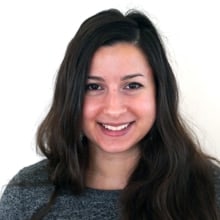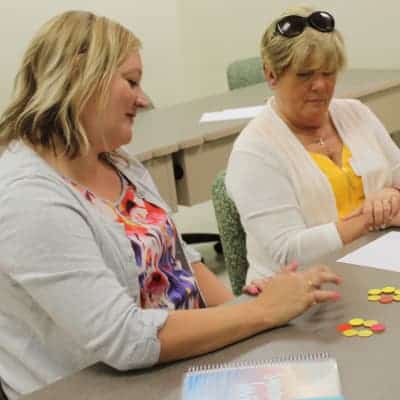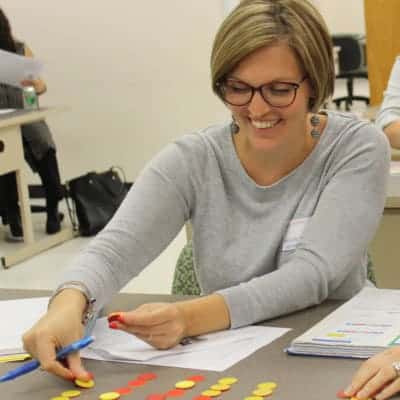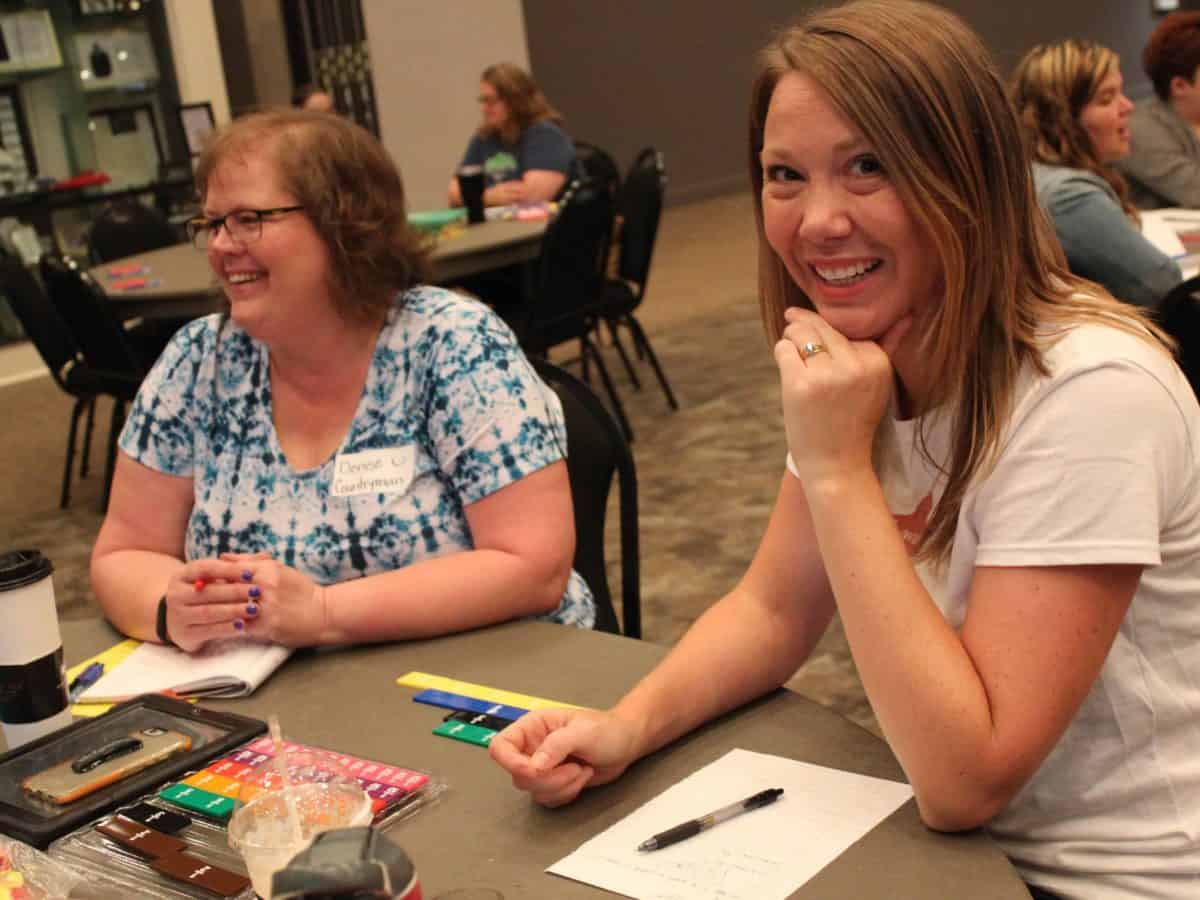

Teachers pulled together colored bars with fraction labels to solve problems as part of a training session at a Singapore math summit held by the Burroughs Wellcome Fund last Tuesday. Kim Bell, an instructional specialist for Wilkes County, led the session and posed hands-on problems to the teachers — just as they would teach it in their classrooms.
“If they get the answer on their own, they’re going to remember it much longer than if teachers tell the students,” said Bell of the approach.
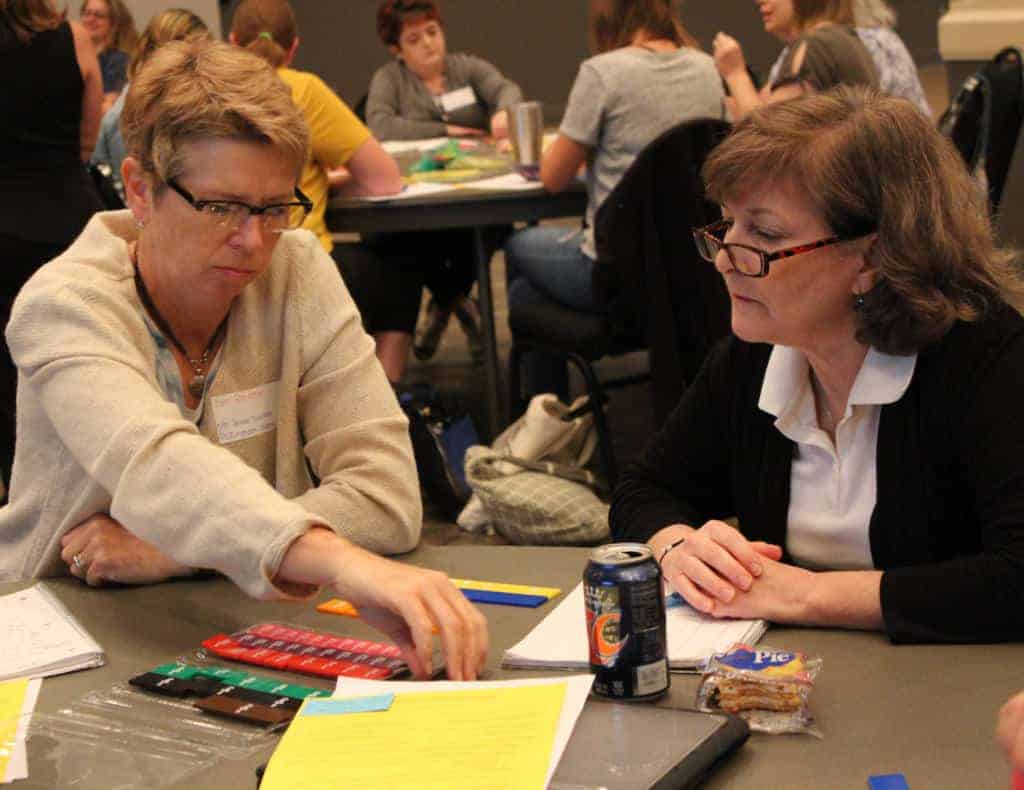

The summit in North Wilkesboro drew approximately 60 elementary school teachers from across the state — from Watauga to Cumberland counties — for a series of workshops on the Singapore math approach. Training sessions included “Solving Two Step Word Problems using Singapore Strategies,” “Fractions the Singapore Way,” “Using the CPA (concrete, pictoral, abstract) Approach,” and “Using Math Journals.”
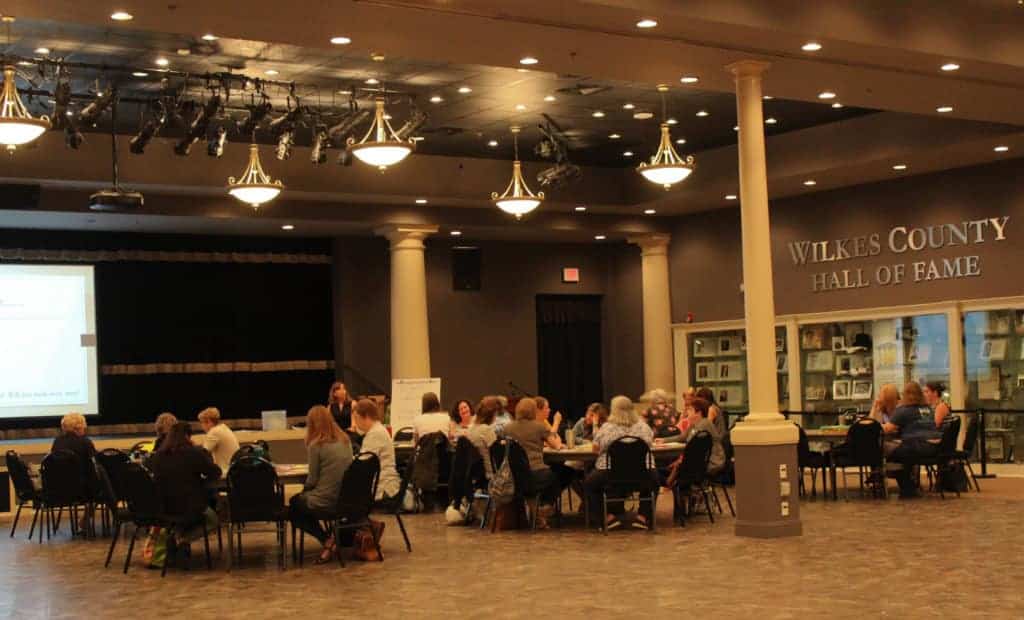

“I think that the way you constantly hear it is that these are just really good strategies,” said Rebecca Lowe, one of the evaluators of the Burroughs Wellcome Fund Singapore mathematics pilot. “It’s just a good way to teach math.”
Lowe said the purpose of the summit was to connect teachers across the state who were already using, or were interested in using, Singapore math in their classrooms. Some teachers have used Singapore math as part of the Burroughs Wellcome Fund pilot, which has now moved onto a second phase, while others heard of Singapore math on their own and were interested in learning more about implementing the strategy in their classrooms.
“I had been doing reading on my own for a number of years about it, but this is my first opportunity to attend a workshop,” said Shyrl Stadler, a third grade teacher at Williamsburg Elementary in Rockingham County. “I love it.”
“I think anytime I can understand new and different ways that opens up more opportunities for me to explain it better to my children because you never know what that missing piece is going to be for a child,” Stadler said.
Teachers who have used Singapore math in their classrooms led various sessions at the summit. In the session “Math in Focus,” LeAnn Lassiter asked teachers, “Let’s all pretend we’re eight-year-olds. How would they use the things in front of them to solve this problem?”
Lassiter’s co-facilitator, Emily West-Dula, walked up to groups as they worked to solve a problem about shapes using token pieces. When one team finished, West-Dula said, “This is where you would say ‘Is there another way to solve this problem?'”
“It’s better to do one problem five ways than five problems the same way,” Lassiter explained.
Alicia Swann, a fourth grade teacher at Charlotte Preparatory, said helping students problem solve is one of the biggest challenges of being a math teacher. West-Dula noted, however, that students are often up to the challenge using Singapore math techniques.
“They don’t get bored. They’re excited about math,” said West-Dula. “They’re asking when math time is.”
To learn more about Singapore math, explore the following articles:
